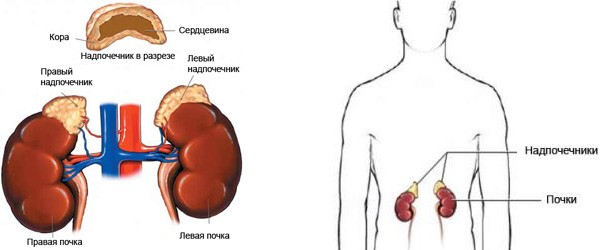Currently, the removal of the adrenal gland, or adrenalectomy, is carried out by means of laparoscopic, retroperitoneoscopic methods, open surgery technique. The wide spread of pathologies associated with the endocrine system of the inhabitants of Ukraine has resulted in an active search for the latest methods of surgical intervention. Laparoscopic adrenalectomy is recognized as the most effective and less traumatic. The Certus clinic has the necessary diagnostic and operational equipment for manipulations, the procedures are performed by doctors of the highest category.
Indications for surgery are presented:
- virilizing tumor;
- unilateral hyperplasia of the adrenal cortex;
- pheochromocytoma of the adrenal gland;
- adrenal adenoma 40 mm or more or actively growing;
- other tumors of the adrenal glands 40 mm or more or actively growing;
- Cushing’s disease with no positive result from other therapy;
- pathological formations of the adrenal glands with a diameter of 35 mm or more;
- single metastasis to the adrenal gland of tumors with a different localization.
Laparoscopic adrenalectomy can be performed at different positions of the patient on the operating table. Unilateral surgery requires the patient to be placed on the side, which is opposite to the operated organ. Bilateral adrenal surgery involves lying on the abdomen. There is a significant difficulty in access through the abdominal cavity, which is due to the significant number of organs encountered on the way of the manipulation instrument.

Laparoscopy of the adrenal gland is carried out only under conditions of the most convenient access to the operated area, therefore it is extremely important to reliably fix the patient and change the configuration of the operating table in order to form a bend in the lumbar spine of the operated patient. It is thanks to this approach, as well as through special pillows and pads, that it is possible to provide an optimal working space for surgical manipulations and a motionless stable position of the patient’s body.
Treatment of an adrenal tumor with laparoscopic surgery takes slightly longer than traditional surgery. The average duration is about three hours. Relatively small blood loss and a reduction in the time period allocated for rehabilitation measures are noted. In some cases, such an operation can be continued using traditional methods without interruption for various manipulations and changing the position of the patient’s body.
Features of the technique of performing laparoscopy
An adrenal tumor and other operable pathological changes require the first puncture from the hypochondrium to the upper edge of the iliac crest, taking into account the rectus abdominis muscle. After performing the incision, the video camera is inserted as carefully as possible and a sufficient amount of gas is supplied to obtain a comfortable working space around the operated organ, in this case it is the adrenal gland. In the context of certain positions of nearby organs, you will need to use special manipulators.
The introduction of additional trocars should be performed with mandatory visual control at the most significant areas in each specific situation. Thanks to the wide range of techniques used in practice, the operating surgeon can take advantage of the most comfortable positions and puncture points.
A feature of laparoscopic adrenalectomy is the removal of the affected organ with its preliminary release. In this regard, adipose tissue, the liver and the vascular system of the upper renal pole will require special attention. Immediately before the excision of a naked adrenal tumor, absolutely all blood vessels supplying the organ with nutrition are blocked. It is important to immediately pack the tissue to be separated inside a sealed capsule, which is removed by means of one of the punctures, which prevents an infectious lesion of the internal cavity. At the final stage, the quality of the applied ligatures and staples is checked, as well as the removal of surgical instruments and the imposition of superficial sutures.
Postoperative rehabilitation period
Recovery of operated patients after laparoscopic intervention is fast, and such patients can be discharged on the second or third day. Return to normal life is possible immediately after the surgical incisions have healed.
Contraindications
The key factor in refusing laparoscopy is suspicion of cancer cells or the established presence of neoplasms, significant tumor size, the likelihood of rupture and subsequent peritonitis, the presence of purulent formations with flabby or rapidly tearing walls.
Advantages of the method
Thanks to modern technology, minimal damage to the body of the operated person is caused, the postoperative period is shortened, the likelihood of complications is noticeably reduced and it becomes possible to return to a normal lifestyle in the shortest possible time.
At the Certus clinic, you can take the necessary tests and get an appointment for adrenal laparoscopy. The indication for this type of surgical intervention, as a rule, is the small size of the adrenal neoplasm, which allows the technique to be classified as very popular and promising.




Add review